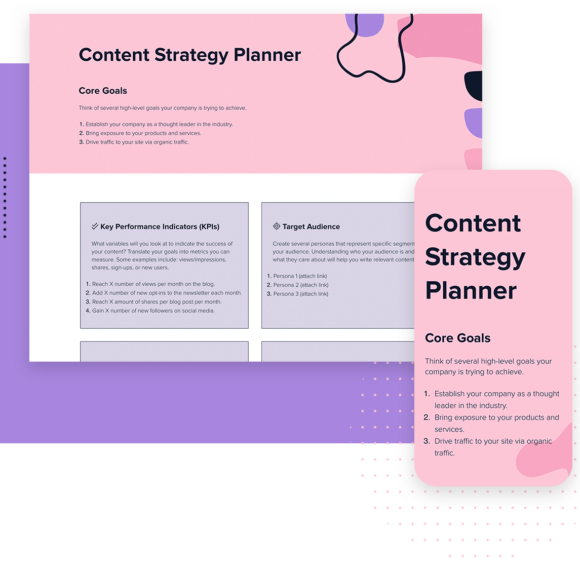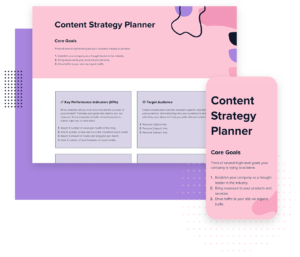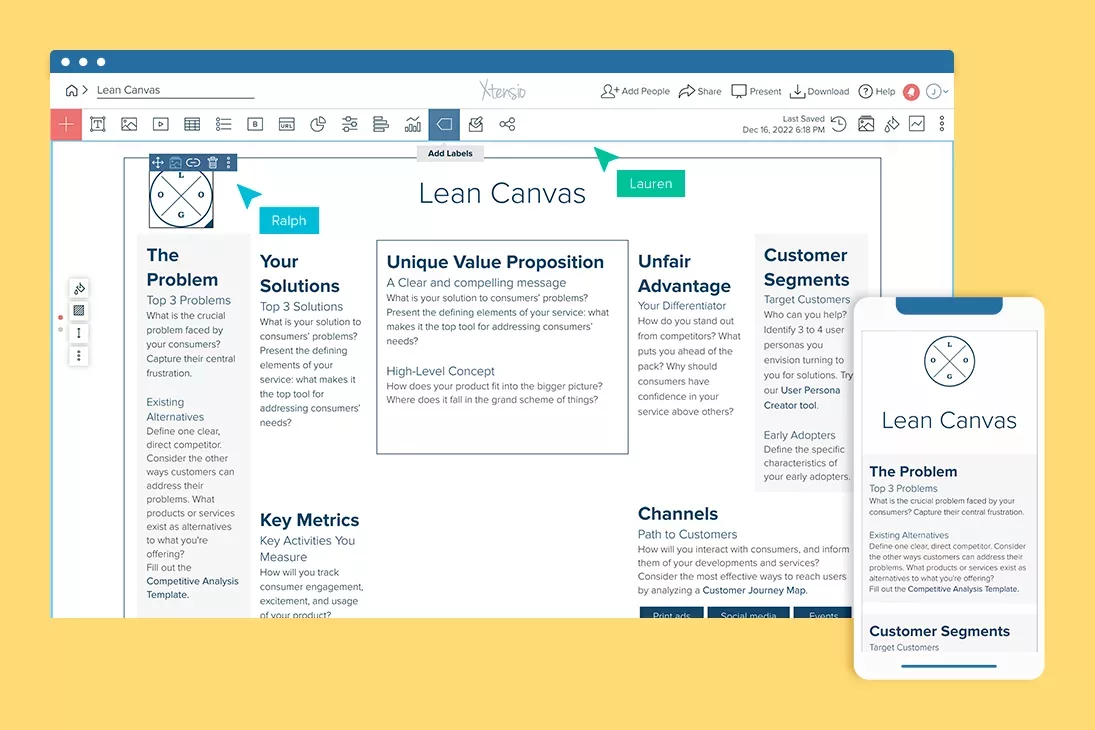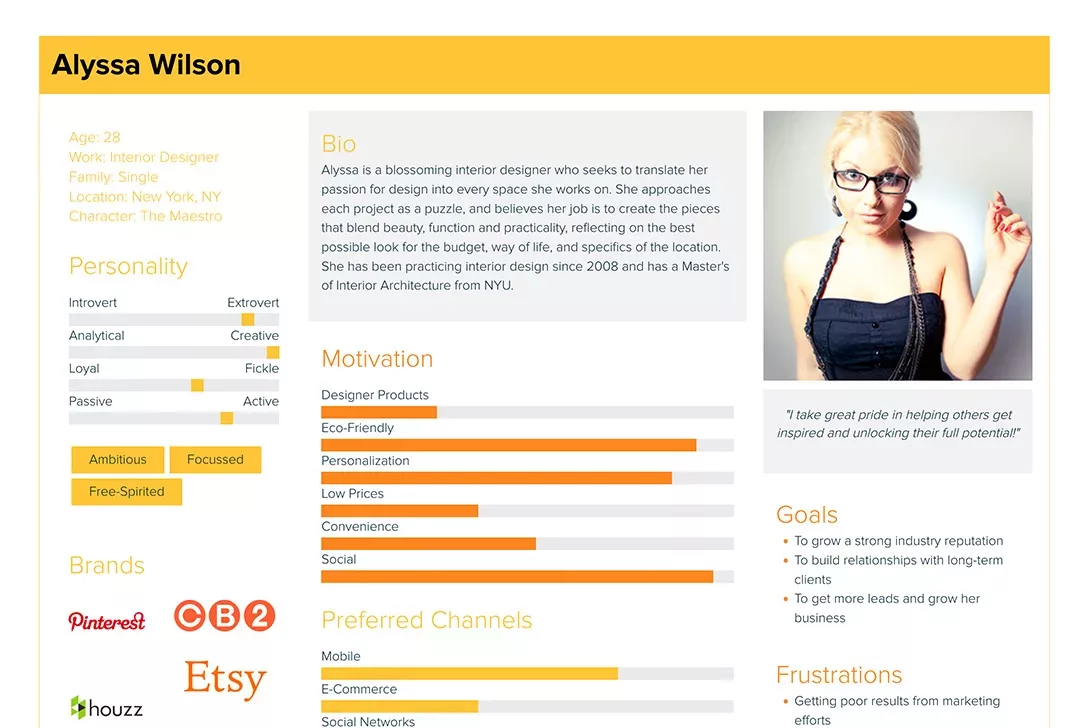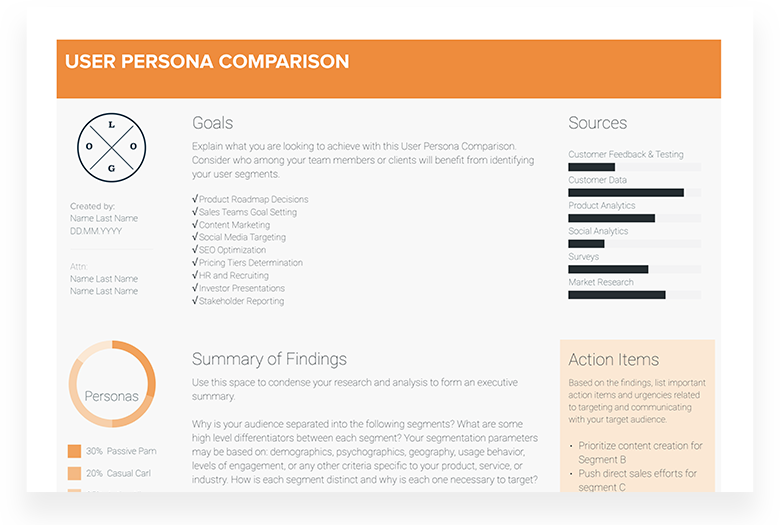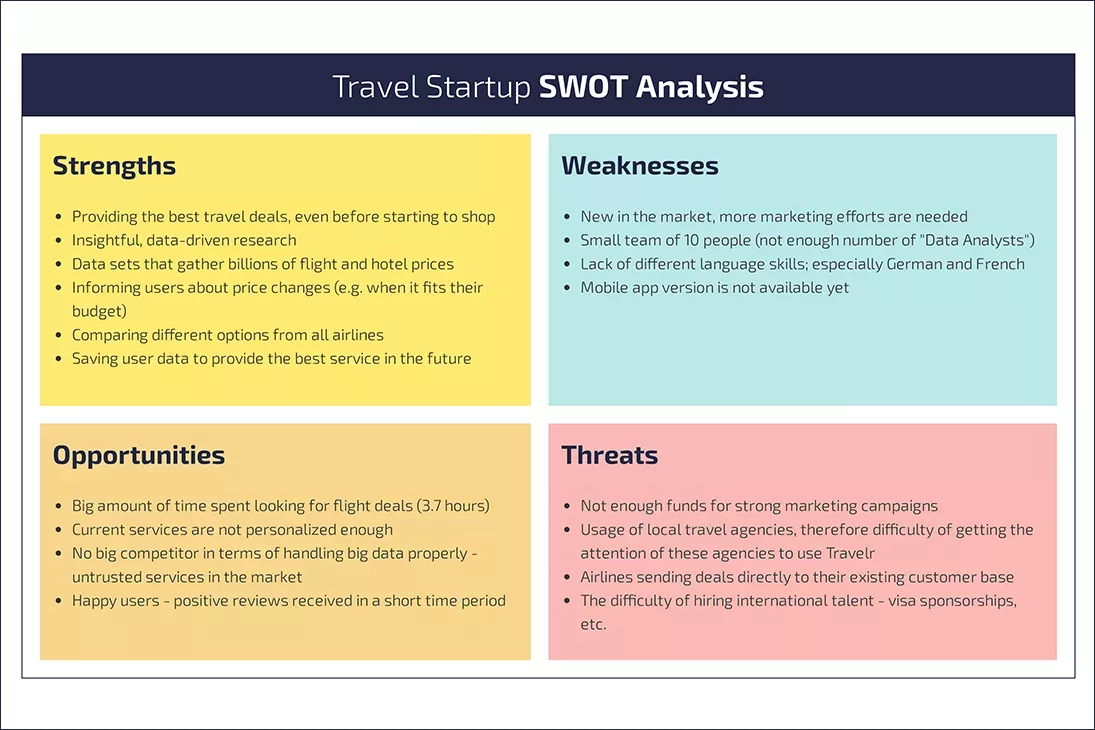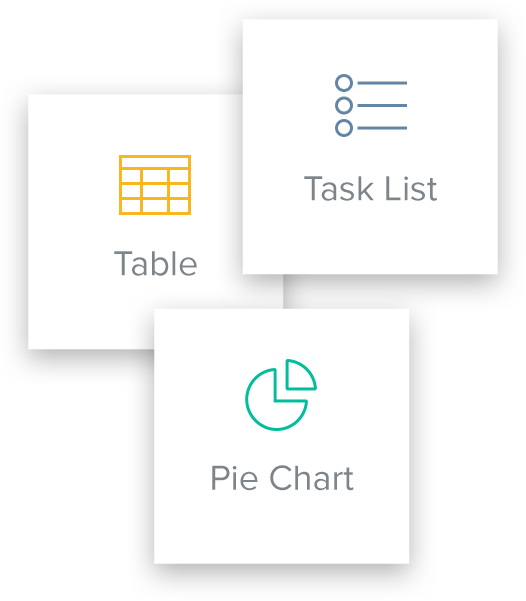Content Strategy Planner Template
A strong content strategy boils down to creating the right type of content for your target audience. Use Xtensio’s interactive content strategy planner template with your team to go through every step of your content strategy, from planning and executing to publishing and optimizing.
- Create a plan to generate reliable and cost-effective sources of website traffic and new leads.
- Define how and what type of content will be used to achieve marketing and business goals.
- Eliminate confusion across departments and streamline content creation.
Xtensio is your team space for beautiful living documents.
Create, manage and share business collateral, easily.
Join the 246,279 changemakers.
Xtensio is your team space for beautiful living documents.
Create, manage and share business collateral, easily.
Join the 246,279 changemakers.
A strong content strategy boils down to creating the right type of content for your target audience. Use Xtensio’s interactive content strategy template with your team to go through every step of your content strategy, from planning and executing to publishing and optimizing.
- Create a plan to generate reliable and cost-effective sources of website traffic and new leads.
- Define how and what type of content will be used to achieve marketing and business goals.
- Eliminate confusion across departments and streamline content creation.
Other content strategy templates
What is a content strategy framework?
The content strategy is a foundational piece of your marketing plan. A content strategy is an ongoing process of turning business objectives into an actionable plan that uses content as the key source of achieving those goals. This framework consists of managing any tangible media that your business creates and owns and helps you outline all the elements you need to plan, execute, publish, and optimize your content.
What information should be included in a content plan?
The information that you include in your content strategy will depend on your business goals and should speak directly to these objectives. In digital marketing, content focuses on four main elements:
- Information – What type of message does your content revolve around? Information can be factual, practical, informative, fun, or a combination.
- Context – This is the objective of your content. Who is your target audience? What problem is your content trying to solve, for your business and the reader?
- Medium – What channels are you publishing the content on, and how does that influence the overall message?
- Format – Content comes in many different styles: text, image, audio, video, interactive, virtual/augmented reality, etc.
How do you write a content strategy?
To reiterate, your content strategy will start with your core business goals and objectives, so start there!
Define your core goals
These goals should be high-level, meaning they should be broad statements or generalities rather than focusing on the fine details. Establish a few goals and build your content around them. Some examples of goals for your content strategy may be:
- Drive traffic to your site via organic traffic.
- Bring exposure to your products and services.
- Become thought leaders in the industry.
Identify Key Performance Indicators (KPIs)
What variables will you look at to define the success of your content? Your KPIs will vary depending on your product and service as well as the goals you’re trying to reach. They may include:
- Reach X number of views per month on the blog.
- Gain X number of new followers on social media.
- Generate $X in revenue.
- Add X number of new opt-ins to the newsletter each month.
- Reach X amount of shares per blog post per month.
Understand who your target audience is
Make sure you understand who your audience is and what they care about. This will help you write relevant content. What information are they seeking? What problems are they trying to solve? Create personas of your ideal audience.
Uncover keywords related to your target audience
You can search popular keywords on the channels you plan to share on (social media, blog, webinars, etc.) or use Google Keyword Planner to find the right keywords for your content. This will improve the SEO and searchability of your content, and help you reach your target audience.
Create a content frequency calendar
How often will you be creating new content? Once a month? Three times a month? Think of your calendar broadly and then go into the finer details afterward. Define a topic for each month, and create subtopics that can guide your content creation.
Write down your publishing procedures and distribution channels
Where might you find your target audience? Every medium is different, what goes onto Instagram can’t possibly be the same as what goes on LinkedIn. Every platform has a finesse that will yield the most results for your company. Some channels you may want to distribute your content on:
- Social Media: Facebook, Twitter, LinkedIn, Pinterest, Instagram, Etc.
- Help Channels: Quora, Reddit, or StumbleUpon.
- Newsletters.
- Traditional PR.
- Influencers.
You’ll also want to create a checklist of procedures to perform before you publish your content to make sure you cover your bases before pushing content to hundreds and thousands of people.
- Proofread for spelling and broken links (obviously).
- Include a direct and compelling post title and make sure your URL matches.
- End with a call-to-action you want your reader to perform.
- Assign Alt Text to any image inserts (recommended for SEO).
- Optimize social share language and images.
- Write a compelling meta description and title.
- Saturate your content with the keywords mentioned in the section above.
Brainstorm content ideas
Take your learnings from uncovering your business goals, target audience, and content topics to brainstorm some ideas for content you’d like to create.
Why develop a Content Strategy?
Companies dedicate time and resources to content marketing as an inbound or organic lead-generation method to increase brand awareness, establish brand trust, and boost traffic to the brand domain. It’s bigger than ever now because the digital age made it so that content marketing can be a low to no-cost method of reaching potential customers. It used to be more like the side hustle next to advertising and sales. And for companies like us, it is the only hustle.
If you choose to enter the content game, beware! It has become extremely saturated. There are more and more platforms, publishing channels, automation tools, and SEO knowledge that make the content path accessible to all. A lot of copycat content out there that creates an echo chamber effect. There is huge competition for search ranking. Players with unlimited resources are merging the content game with the advertising game to tip the scales to their own advantage in the attention span wars. Therefore for small businesses or startups, the effort you put into content marketing should be nimble and experimental, but also well-planned and strategic.
We put together instructional content marketing process templates that can take you through different phases of your content marketing efforts. These are the industry’s best strategy, productivity, and creativity frameworks to tap into. Check them out if you plan to enter the content game.
How to create a content strategy with Xtensio
- Click and start editing, no account or credit card required.
Follow along with the instructional content strategy template details. Add charts, graphs, images, and videos to customize the content strategy template and make it your own. Drag & drop. Resize. It’s the easiest editor ever.
- Customize everything in the content strategy template to match your brand guidelines.
Define your style guide. Add your (or your client’s) brand fonts and colors. You can even pull colors directly from a website to easily brand your content strategy and more.
- Work on your content strategy together on the cloud.
Add colleagues (or clients) to collaborate on the content strategy template. Changes automatically save and sync across all devices, in real-time.
- Share a link. Present a slideshow. Embed. Download a PDF/PNG.
The content strategy template seamlessly adapts to your workflow. No more jumping from tool-to-tool to design different types of deliverables.
- Reuse and repurpose.
Save your own custom annual content strategy templates. Or copy and merge into other documents.
Frequently asked questions
What is Content Strategy?
Content strategy refers to the planning, development, and management of content across various media. It involves creating a cohesive plan to produce, distribute, and govern content to achieve specific business objectives.
What is an example of a content strategy?
An example of a content strategy could be a SaaS company creating a series of blog posts, webinars, and eBooks aimed at educating their target audience about the benefits of their software. The content is then promoted through social media, email marketing, and SEO to drive traffic, generate leads, and ultimately increase sales.
What are the 3 C’s of content strategy?
The 3 C’s of content strategy are Content, Context, and Customer. Content refers to the actual material you produce, Context is the setting in which the content is consumed, and Customer focuses on the target audience you aim to reach.
What are the 5 pillars of content strategy?
The 5 pillars of content strategy are Substance, Structure, Workflow, Governance, and Audience. Substance deals with the type and quality of content, Structure focuses on how content is organized, Workflow outlines the process of content creation, Governance sets the rules for content management, and Audience identifies who the content is for.
What are the 4 steps of content strategy?
The 4 steps of content strategy are Research, Plan, Create, and Analyze. Research involves understanding your audience and market, Plan outlines the types of content and distribution channels, Create involves the actual production of content, and Analyze focuses on measuring the effectiveness of the content.
How do you create a content strategy?
Start with Xtensio’s free template. Creating a content strategy involves conducting market research, defining your target audience, setting objectives, planning content types and distribution channels, creating a content calendar, producing the content, and finally, analyzing its performance to make data-driven adjustments.
What is the difference between content strategy and content marketing?
Content strategy is the overarching plan that guides the creation and management of content, while content marketing is the tactical execution of that strategy, focusing on creating and distributing valuable content to attract and engage a target audience.
Why is content strategy important?
Content strategy is important because it provides a structured approach to content creation and distribution, ensuring that content aligns with business goals, meets audience needs, and maximizes ROI.
What tools are used in content strategy?
Tools commonly used in content strategy include content management systems (CMS), keyword research tools, analytics platforms, project management software, and social media management tools. Xtensio helps you put together all your findings to define the final strategy to be implemented and followed.
How do you measure the success of a content strategy?
The success of a content strategy is typically measured using key performance indicators (KPIs) such as website traffic, engagement rates, lead generation, conversion, and churn rates.
Related to the Content Strategy Planner Template
Fully customizable templates that you can make your own.
See how Xtensio can help your business

Build and launch products and services successfully.

Engage buyers more and close sales faster.
Teams use Xtensio to craft and share beautiful living documents.
246,279 users and counting.



Jeff Schenck
Marketing Manager @

David Nason

Grace Ghunaim
Global Chief Strategy Officer (CSO) @

Ben Cary
Founder @

Jennifer Alt
UI/UX Designer @

Zac Heisey
Director of Digital Marketing @

Jenny Johansson
UX Manager @

Ryan Dobson
Global Engineering Manager @
